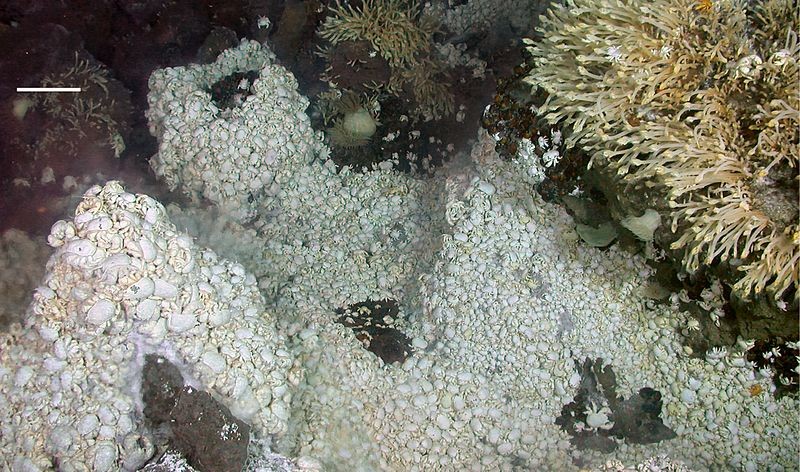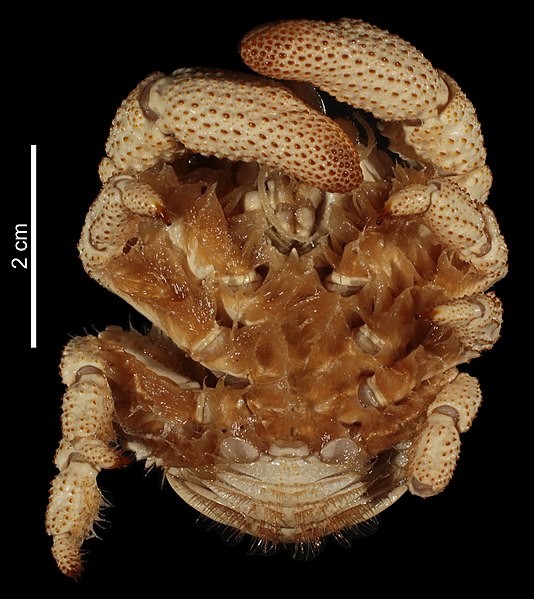The tiny cities of hairy-chested Hoff crabs have been found in the depths. These crabs, which bear David Hasselhoff's name and were discovered 2,500 meters below the surface, inhabit one of the planet's most severe environments.

Dense mass of Hoff around deep-sea hydrothermal ven
Deep Down Below
They were found 2,500 meters below the surface on a research ship in the Southern Ocean. These crabs were a form of yeti crab, but instead of having hairy arms, they had magnificent hairy chests.
According to Nicolai Roterman, a deep-sea biologist at Portsmouth University, the scientists thought of calling it after Sean Connery, the actor who played James Bond. The "Hoff crab" was named after David Hasselhoff, who is well known for playing a Los Angeles lifeguard in the 1990s television sensation Baywatch.
The crabs' ability to survive amid the searing hydrothermal vents, commonly known as black smokers, one of the planet's harshest ecosystems, depends on their hairy arms and chests.
Also Read: Extremely Resilient Horseshoe Crabs Survived Millions of Years Just to Face Human Threats
Scavenging the Extreme Ocean Floor

Kiwa tyleri (Hoff Crab)
Like other crustaceans, Yeti and Hoff crabs do not scavenge for dead food or hunt after their victim. Instead, they feed on microbial colonies that develop inside their fur. These bacteria generate energy from hazardous substances emitted by vent chimney stacks, such as methane and hydrogen sulfide.
The microbial process called chemosynthesis, which can place in the deep sea's total darkness without the need for sunlight is a dark alternative to photosynthesis in plants. Roterman believes that "life's flexibility is astonishing."
According to Roterman, "We saw them spar with each other, weighing each other up and using their claws like calipers." The male Hoff crabs compete for good real estate to be closest to the chemical-rich waters that bathe their bacteria and produce more food, and there can be over 700 of them per square meter.
They dwell together in a small space warm enough for life but not hot enough to boil, forming little towns beneath the ocean's surface.
The Hoff crab's life is very different for females. Because the waters around the vents are oxygen-deficient and their young would quickly expire, they cannot afford to linger out there with clutches of fertilized eggs adhering to their bodies. Therefore, pregnant women flee into the chilly night a few meters from the chimneys. They wait there and starve due to a shortage of chemicals for their microbial fur farm.
The cold water paralyzes them, making them easy prey for predators. According to Roterman, "We discovered these peculiar seven-armed starfish that would patrol the boundary and devour the females."
Still Full of Mysteries
One of the many unsolved questions regarding Hoff crabs is whether females give birth just once before dying or if they live to return to the vent chimneys and mate again. He claims, "We don't know if it's a one-way trip.
Hydrothermal vent species may be among the first deep-sea species to become extinct. More stratification and stagnation are predicted due to global warming. Due to the low oxygen levels near hydrothermal vents, yetis and crabs may be particularly vulnerable to climate change.
Related Article: Crabotage: Research Team Battles Crab While Studying Underwater Volcano
For more animal news, don't forget to follow Nature World News!
© 2024 NatureWorldNews.com All rights reserved. Do not reproduce without permission.




![Roundworms with Short Memories 'Stop Forgetting' When Frozen or Given Lithium [Study]](https://1471793142.rsc.cdn77.org/data/thumbs/full/70295/280/157/50/40/roundworms-with-short-memories-stop-forgetting-when-frozen-or-given-lithium-study.jpg)
